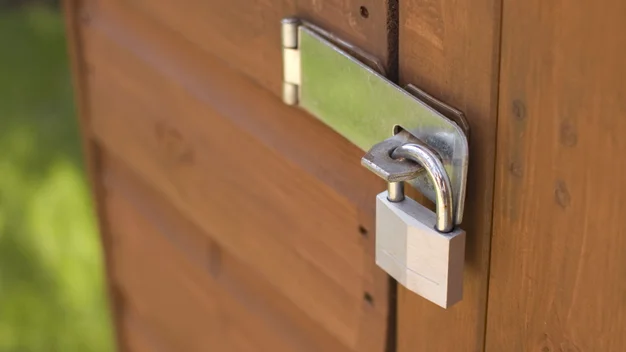When Nicolai Bezsonoff and Constanza Collarte decided to move to Miami in 2010, it wasn’t just to establish a new home in a new place — it was to build a life together after years of long-distance romance.
Although both had previously lived in Miami, New York and London, they didn’t meet until attending a mutual friend’s engagement party in Bogotá, Colombia, in 2008. At the time, Mr. Bezsonoff was living in New York and Ms. Collarte was in the process of leaving Miami for London.
The two-year bicontinental relationship that blossomed from that initial encounter “involved a lot of air miles and AT&T long-distance bills,” said Mr. Bezsonoff, 46, a technology executive who specializes in domain names and hosting.
Eventually, they uprooted their lives to be together, sharing a beachfront apartment on Key Biscayne for a few years. “It was a little paradise, just gorgeous,” said Ms. Collarte, 40, an interior designer.
But when they began having children — they now have three: Andreas, 7, Lucia, 4, and Agustin, 1 — they outgrew their space, and that sand-between-the-toes lifestyle felt less paradisiacal.
So in 2016, they started searching for a new home. But they were left cold by most of what they saw. “Everything in the landscape was a white, modern box,” Ms. Collarte said.
What they were hoping for was a house with character. Or, as Mr. Bezsonoff put it, “We wanted something that felt more like home, and not so new.”
When they toured a 1930s Mediterranean-inspired home in the Coconut Grove neighborhood, Ms. Collarte said, “We both fell in love immediately.”
The home’s stucco and terra-cotta-roofed exterior — wrapped by a lush yard of magnolia and palm trees, clipped Green Island ficus and brick walkways created by Fernando Wong, a Panamanian landscape designer — exuded charm.
The 5,400-square-foot interior was another story. The house had suffered a series of renovations and additions over the years, leaving it with awkward connections and corridors, and dated finishes — exactly what the couple had dreamed of finding. “We wanted something that we could sink our teeth into and do a little work on to make our own,” Ms. Collarte said.
They bought the house for about $3 million that May, and Ms. Collarte began drawing plans for a renovation that would not only update the interior style, but also move walls to create cohesive, convenient living spaces for a busy young family.
She moved the laundry room from the garage into the ground floor of the house, opened the kitchen to the family room, removed a fireplace that was in the way, repositioned bathrooms, relocated an ill-placed staircase, swapped the locations of the living room and dining room, and added new windows to bring in light and air. Except for saving some original doors and floors, which she had refinished, it was a complete gut renovation.
“I wanted to take it to almost a California-style Spanish home,” Ms. Collarte said, while adding pleasing textures, soft curves and colors, natural materials and hand-applied finishes. “There’s a lot of human touch on everything, which is a big thing for me.”
The cabinets in the newly expanded kitchen, for instance, were painted by hand rather than lacquered in a shop. And the white walls have a cloudy appearance because Ms. Collarte’s painter applied lime wash and then waxed the surface, which adds luster and protects the finish from messy hands.
She lined the primary bathroom with warm-hued limestone and installed custom white-oak cabinetry. And in many areas throughout the house, she designed arched openings and walls with rounded edges, eschewing sharp corners.
The interior space doesn’t look high-tech, but a smart-home system allows the couple to control lighting, heating, cooling and entertainment from their smartphones. “I mean, I’m in tech, so one of the requirements was that I wanted to have a rack with equipment — just some blinking lights,” Mr. Bezsonoff said. (In keeping with Ms. Collarte’s aesthetic, however, it’s concealed.)
That serene feeling belies the surprises that contractors unearthed during construction. As demolition began in February 2017, the couple discovered sagging beams and foundation problems. Also, “we realized we had to redo the roof,” Ms. Collarte said. “And we discovered there were termites.”
It took 17 months of work to complete the transformation, at a cost of roughly $130 a square foot.
After living in the house for more than two years, Mr. Bezsonoff is still occasionally surprised by how much he likes it. “I was literally kicking and screaming about moving away from my beloved apartment,” with its water view, he said. “It was a big change, but I love how we live in this house. I guess I didn’t realize I was going to be able to enjoy the house so much.”
And having more room to spread out has been a gift during the pandemic. “There are spaces for everyone to Zoom, and for Nicolai and me to do our work,” Ms. Collarte said. “And there are places where we can hide from our kids when necessary.”
For weekly email updates on residential real estate news, sign up here. Follow us on Twitter: @nytrealestate.





More Stories
Buying a Condo
Red, White and Blue – What Are The Timeshare Seasons?
What You Need to Know About Selling Your Condominium in Today’s Market